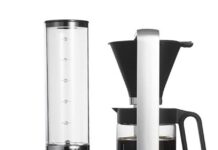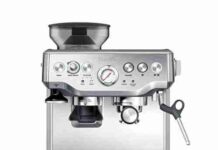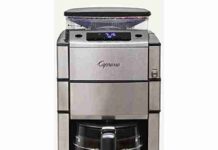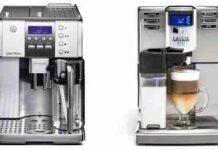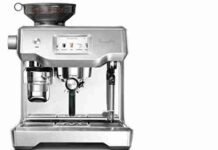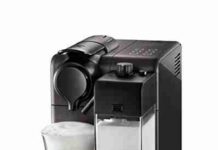Ever wondered how your morning cup of coffee magically appears at the push of a button? Well, let us acquaint you with the inner workings of a drip coffee maker. This marvel of engineering combines simplicity and ingenuity to deliver that perfect brew. By harnessing the power of gravity and hot water, this humble machine extracts the rich flavors from your coffee grounds and fills your kitchen with the tantalizing aroma of freshly brewed java. So, sit back, relax, and join us as we unravel the fascinating process behind your beloved drip coffee maker.
Overview
A drip coffee maker is a popular and convenient appliance that allows us to brew our favorite coffee at home. It consists of various components and operates on a basic working principle. Understanding how these machines work can help us make the most out of our coffee-making experience.
Components of a drip coffee maker
A drip coffee maker typically consists of several components that work together to brew a delicious cup of coffee. These components include a water reservoir, heating element, thermostat, water flow mechanism, filter basket, drip rate control, warmer plate, programmable timer, and brew strength options. Each component plays a crucial role in the brewing process, ensuring that the coffee comes out just the way we like it.
Basic working principle of a drip coffee maker
The basic working principle of a drip coffee maker involves heating water and then passing it through a filter containing coffee grounds. The heated water drips onto the coffee grounds, extracting the flavors and oils. As the brewed coffee drips into the pot below, it is kept warm on a warmer plate until we are ready to enjoy our cup of joe. This simple yet effective process allows us to brew coffee easily and consistently.
Water Heating
Water reservoir
The water reservoir in a drip coffee maker is where we pour the water that will be used for brewing. It is usually a transparent container with marked measurements, allowing us to see the water level. The reservoir’s capacity determines the number of cups we can brew at a time, so it is important to consider the size when selecting a coffee maker.
Heating element
The heating element in a drip coffee maker is responsible for heating the water to the optimal brewing temperature. It is typically a small rod or coil located beneath the water reservoir. When the coffee maker is turned on, the heating element begins to warm up, ensuring that the water reaches the desired temperature efficiently and quickly.
Thermostat
The thermostat is a crucial component that helps regulate the temperature of the water. It ensures that the water does not get too hot or too cold, maintaining the ideal brewing temperature. The thermostat continuously monitors and adjusts the temperature during the brewing process, allowing for consistent and flavorful coffee.
Brewing Process
Water flow
The water flow mechanism in a drip coffee maker controls the movement of water from the reservoir to the coffee grounds. When we start the brewing process, the water flows through a tube or channel and into the filter basket. The flow rate can vary depending on the coffee maker, and some models offer options for adjusting the flow rate to achieve different strengths or flavors.
Filter basket
The filter basket holds the coffee grounds during the brewing process. It is usually a removable component made of plastic or metal mesh. The basket allows water to pass through while capturing the coffee grounds. This ensures that only the brewed coffee flows into the pot, preventing any residue or sediment from getting into our cup.
Coffee grounds
The coffee grounds are an essential part of the brewing process. We can choose our favorite coffee beans or pre-ground coffee to use in the drip coffee maker. The water drips onto the coffee grounds in the filter basket, extracting the flavors and oils. The size of the coffee grounds can influence the taste and strength of the brewed coffee, so it is worth experimenting to find the perfect grind size for our preferences.
Drip rate control
Some drip coffee makers offer a drip rate control feature that allows us to adjust how quickly the water drips onto the coffee grounds. This feature gives us more control over the brewing process, allowing us to customize the strength and flavor of our coffee. By adjusting the drip rate, we can achieve anything from a bold and robust cup to a milder and more delicate brew.
Warmer Plate
Purpose of the warmer plate
The warmer plate in a drip coffee maker serves an important purpose: it keeps the brewed coffee warm after it has finished brewing. The plate is usually located below the coffee pot and is typically heated by an element within the machine. This feature ensures that we can enjoy a hot cup of coffee even if we don’t consume it immediately after brewing.
Temperature control
Some drip coffee makers include temperature control settings for the warmer plate. This feature allows us to adjust the temperature to our liking, ensuring that the coffee stays warm without becoming too hot or losing its flavor. Having control over the temperature ensures that we can enjoy our coffee at the perfect warmth for an extended period.
Timer and Brewing Options
Programmable timer
Many drip coffee makers come equipped with a programmable timer feature, allowing us to set a specific time for the machine to start brewing. This is particularly useful for those early mornings when we want to wake up to the aroma of freshly brewed coffee. By setting the timer, we can ensure that our coffee is ready and waiting for us when we need it.
Brew strength options
Some drip coffee makers offer brew strength options, which enable us to tailor the strength and flavor of our coffee to our preferences. These options typically allow us to choose between regular or strong brews, ensuring that we can satisfy our taste buds with a cup of coffee that suits our individual tastes.
Maintenance and Cleaning
Regular cleaning
To keep our drip coffee maker in optimal condition, regular cleaning is essential. This involves washing the removable components, such as the filter basket and coffee pot, after each use. Additionally, wiping down the exterior with a damp cloth and regularly cleaning the water reservoir helps prevent any buildup or residue from affecting the taste and performance of the machine.
Descaling
Over time, mineral deposits can accumulate on the internal parts of a drip coffee maker, affecting its performance and the taste of the brewed coffee. Descaling is the process of removing these deposits using a descaling solution or a mixture of vinegar and water. It is recommended to descale the coffee maker every few months to maintain its efficiency and ensure a flavorful brew.
Replacing parts
In case of any malfunction or wear and tear, it may be necessary to replace certain parts of the drip coffee maker. Commonly replaced parts include the coffee pot, filter basket, and heating element. It is important to refer to the manufacturer’s instructions or seek professional assistance when replacing parts to ensure proper installation and functionality.
Benefits and Drawbacks
Pros of drip coffee makers
Drip coffee makers offer several benefits that make them a popular choice for many coffee lovers. Firstly, they are easy and convenient to use, allowing us to brew a pot of coffee with minimal effort. They also offer the flexibility to adjust the strength and flavor of the coffee. Additionally, most drip coffee makers have a relatively large capacity, making them ideal for brewing coffee for a group. Finally, they are often more affordable compared to other coffee brewing methods, making them a cost-effective option.
Cons of drip coffee makers
While drip coffee makers have many advantages, they also have a few drawbacks. One common complaint is that the brewed coffee can sometimes taste bland or lack the robust flavors of other brewing methods. Additionally, the warming plates of some models can sometimes overheat the coffee, leading to a burnt taste if left on for too long. Lastly, drip coffee makers may not offer the same level of control and precision as other brewing methods, making it challenging for coffee enthusiasts who prefer a more hands-on approach.
Alternative Brewing Methods
French press
The French press is a popular alternative brewing method that involves steeping coffee grounds in hot water and then pressing them using a plunger to separate the coffee from the grounds. This method allows for stronger and more intense flavors, as well as more control over the brewing process. French presses are known for producing full-bodied and rich cups of coffee.
Pour-over
Pour-over brewing involves gradually pouring hot water over coffee grounds in a cone-shaped filter. This method allows for precise control over the water flow and extraction process, resulting in a clean and flavorful cup of coffee. Pour-over methods are often favored by coffee enthusiasts who appreciate the art and technique of brewing.
Espresso machines
Espresso machines offer a different brewing method, focusing on extracting intense flavors from finely ground coffee through high-pressure water. These machines use specialized coffee pods, capsules, or ground coffee to brew small amounts of concentrated coffee known as espresso. Espresso machines allow us to explore a wide range of coffee-based beverages, from espressos to cappuccinos and lattes.
Choosing the Right Drip Coffee Maker
Capacity
When choosing a drip coffee maker, consider the desired capacity based on our brewing needs. Some models offer small capacities suitable for single servings, while others can handle larger volumes for multiple cups. It is important to select a capacity that aligns with our daily consumption or the number of people we usually serve coffee to.
Brewing features
Different drip coffee makers offer various brewing features, such as programmable timers, brew strength options, and adjustable drip rates. Consider the features that are most important to us and match our brewing preferences. Programmable timers are useful for those who want their coffee ready at specific times, while brew strength options allow for customization according to our taste preferences.
Brand and durability
Consider the brand reputation and customer reviews when choosing a drip coffee maker. Opting for a trusted and reputable brand increases the likelihood of purchasing a durable and reliable machine. Researching customer reviews can provide insights into the performance, longevity, and overall satisfaction with the specific model we are interested in.
Conclusion
Drip coffee makers are a fantastic addition to any coffee lover’s kitchen. With their ability to brew a consistent and flavorful cup of coffee, easy operation, and various features, they offer convenience and versatility. While other brewing methods have their merits, drip coffee makers remain a popular choice for their simplicity and convenience. By understanding the components, working principle, and maintenance of these machines, we can enjoy a satisfying cup of coffee brewed exactly to our liking.



